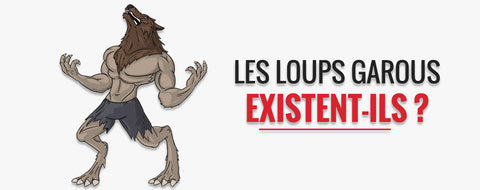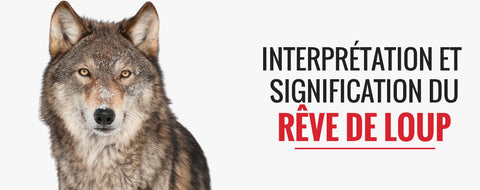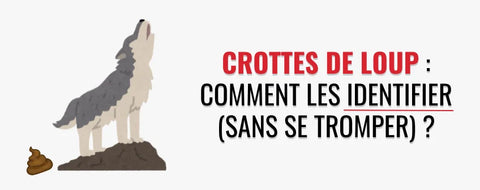
The Gray Wolf: What You Need to Know About Its Life.
of reading - words
The gray wolf is a mammal of the Canis lupus subspecies. It is the most widespread canid species, including dogs, jackals, foxes, etc.
This animal has always been a source of fascination, particularly through tales and myths that have highlighted its ferocity and wild appearance. However, immersing yourself in its world reveals other attractive aspects of its life. Read this article to discover them.

General information about the gray wolf
The gray wolf, also called the European wolf, Eurasian wolf or steppe wolf, is distributed throughout the globe . It is distributed across different continents: it is found in particular in Central Europe, Central and North America, Asia and North Africa.
During its travels, this wolf developed several subspecies depending on the occupied territories. After its eradication in the 1930s, the gray wolf has made a comeback since 1992. It came from Italy and crossed the Alps to settle in the Vosges Mountains in 2011.

Morphology
The gray wolf has a powerful build similar to that of a German Shepherd. The male's build is more vigorous than the female's and varies depending on the environment in which it lives.
In particular, the density and color of its fur are very variable. We distinguish furs with a color: gray, white, black, fawn, etc. We note that the upper part of its body is always darker than the ventral part, with a white facial mask under the muzzle.
The weight of the gray wolf varies between 25 kg and 55 kg and can reach 80 kg. Its length extends up to 160 cm .
The hunt
The gray wolf is a very powerful and fast super-predator. Its top speed can reach 40 to 50 km/h, and it can travel an average of 60 km per night.

As a carnivore, this wolf hunts for food on a variety of prey. For example, when it is solitary, it is content with small prey, such as small rodents or rabbits. When hunting in a pack, the group favors large ungulates such as wild boar, musk ox, chamois, roe deer, reindeer, etc.
During the hunt, the pack stalks its prey over a 2 km distance. Then, it attacks the prey from the sides and rear, and finally pounces on it. It inflicts serious wounds to make it bleed as much as possible, after which it immediately succumbs.
Sometimes the wolf feeds on carrion, berries, blueberries, and may even steal prey from other predators.
Here is a detailed article on the wolf's diet .
Life in the pack
Wolves often live in packs that follow a well-established hierarchy. Each pack is composed of an average of 4 to 5 members, whose structure can change due to several reasons, such as death, births, and dispersal. This phenomenon consists of a wolf leaving its pack when it reaches 2 or 5 years of age, in order to seek a new territory to settle and found its own pack.
The pack is led by a dominant couple, the Alpha couple. Other hierarchical levels are represented by the Beta, Gamma, Omega, and Wolf Pups.

The Alpha Couple
This is the leading and strongest pair in the pack. Notably, the alpha male is the first to feed after hunting prey. This pair is responsible for making decisions regarding the pack's survival, including movement and hunting. Furthermore, this pair exclusively retains reproductive rights.
The Beta Wolf
It is the closest animal to the Alpha wolf. It is distinguished by its robustness and its main function is to protect the dominant couple.
The gamma wolf
The gamma wolf, or subordinate, acts as a sentinel to monitor the surroundings and protect the troop.
The Omega Wolf
The Omega Wolf wears the cap of a scapegoat who endures the blows of enraged wolves, in order to avoid clashes between them.
The Cubs
Wolf cubs do not have a well-defined hierarchical level because they are not yet mature. They are cared for by the gamma wolves who look after them.
Each pack protects its territory with special markings, such as urine and howling. These practices are also used in communication between members of the pride.
Communication
Wolves use different means to communicate with each other:

- Auditory communication : Howling is the most common means of communication for wolves to communicate among themselves and to signal to foreign animals that the territory is occupied by the pack.
- Postural communication : is a type of body communication that involves facial expression, hair erection, and tail position. In particular, a wolf with an upright posture and bristling hair represents the posture of a dominant wolf.
- Olfactory communication : the wolf has a highly developed sense of smell that allows it to know, for example, whether the territory is dominated by another pack, through the smell of urine in certain areas.
At the end of the 19th century, the wolf population was threatened with extermination. In order to preserve this wild animal species, it is protected by the Bern Convention (1979) and defended by certain organizations, such as FERUS and the CAP-LOUP collective.
If you also defend this animal cause, you can express it, notably through your clothing style, for example wearing a wolf cap .





